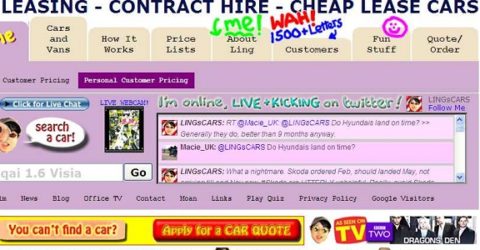What happens to old websites?
Old websites are often forgotten and abandoned, but their addresses can subsequently be reused by unrelated brands or businesses

If you’ve never visited the Wayback Machine website, you’re missing a treat.
This free global library of historic webpages has been compiled by a non-profit organisation dedicated to immortalising old websites, which would otherwise be lost forever.
The Machine has captured 728 billion webpages throughout their existence, allowing visitors to study how sites – and their contents – have evolved over the last thirty years.
The Wayback archives also display the contents of innumerable websites which are no longer live, for one reason or another.
That begs the question of what happens to old websites. Are they decommissioned, deleted or simply dormant in cyberspace?
Domain offender
To be publicly visible, a website needs to have a domain name.
This digital address is effectively a patch of online real estate, purchased for between one and nine years. Throughout that period, its purchaser can do whatever they want with it.
Some domain names never feature content – a concept known as being parked.
Others display homepage adverts encouraging people to purchase the domain name (at a healthy mark-up, obviously).
The rest will contain content of some variety, visible to anyone who enters that domain name into their web browser’s address bar.
Sometimes, very old content stays online because its creators see no need to remove it.
Consider the 1994 website claiming Strawberry Pop-Tarts can catch fire in a toaster. The site’s owner clearly still feels the need to warn the public about this extinction-level threat, 28 years later.
The website is laughably basic by modern standards, but it’s a valuable example of mid-1990s web design.
It’s also a rare example, since the vast majority of Nineties websites have either been updated or deleted.
Sometimes, a site will be erased to prevent its contents being visible any longer, such as a rebranded company no longer wanting customers to view its previous incarnation.
However, most obsolete sites vanish when their domain ownership is not renewed. After a series of warnings and grace periods from the hosting company, the site goes offline.
Almost immediately, search engines begin to downgrade it, pushing it further down their rankings until it’s expunged altogether.
New beginnings
Once ownership has been relinquished, the domain name reverts to open sale.
At this point, anyone else can purchase it and develop a website to be hosted at this domain name, with no search engine history or legacy ties to whatever was there beforehand.
Content is typically uploaded through a third-party website building platform like Wix or WordPress, though it may be handled by the domain reseller’s in-house team.
A slightly different process occurs when you purchase an existing domain that’s being advertised as for sale.
It takes longer for new content to erase the legacy of ‘buy this domain’ adverts, though it will happen eventually.
Only the Wayback Machine will remember that this site was ever anything other than its current incarnation…






